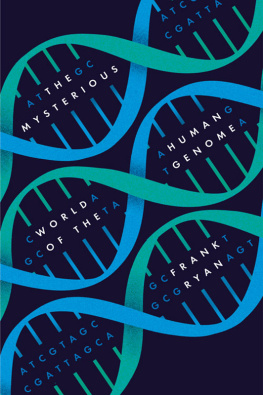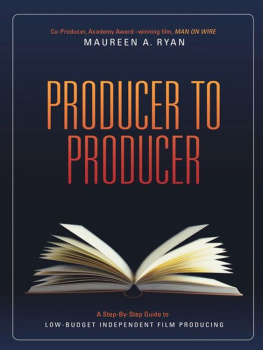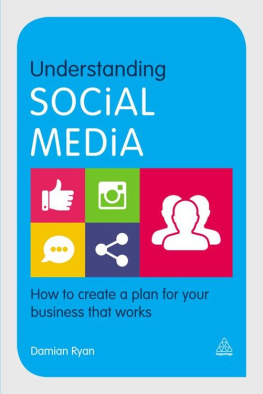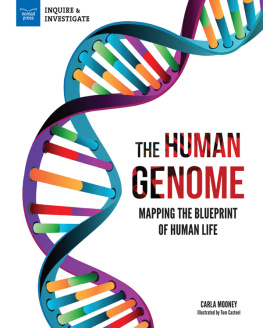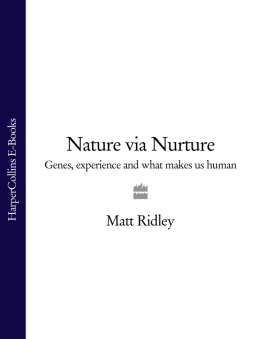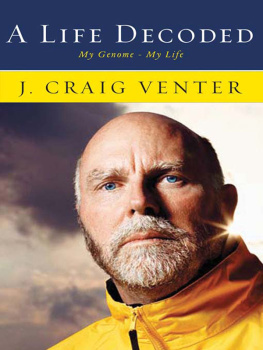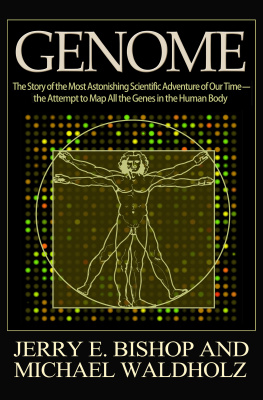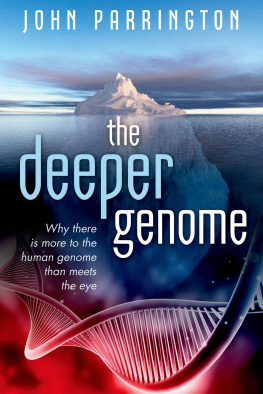
Many scientific colleagues have contributed generously to my thoughts on the human genome over the last two decades, as have my audiences in the lectures I have given on various aspects of this fascinating theme. I would in particular like to thank the kindness and generosity of Erik Larsson and his colleagues at Uppsala, and Katerina Douka at the Oxford Radiocarbon Accelerator Unit, each for reasons that will become obvious in the text. I would like to thank my UK publisher, Myles Archibald of HarperCollins, who encouraged the development of the idea. My thanks also to my UK editor, Julia Koppitz, and my agent, Jonathan Pegg, each of whom have long been wonderfully enthusiastic and supportive. A new edition of a book always heralds a new adventure. For this exciting US adventure, I acknowledge and thank Steven L. Mitchell, who welcomed me to the fold of Prometheus Books. It was a pleasure to work with editor Melissa Ra Shofner, whose attention to detail was scrupulous and impressive. Finally, may I thank in advance the publicists, Jake Bonar and Cheryl Quimba, who promise their own lively contribution.

Brenner, S. My Life in Science. Philadelphia: Biomed Central, 2001.
Bronowski, J. The Identity of Man. Amherst, NY: Prometheus, 2002.
Cavalli-Sforza, L. L. Genes, Peoples and Languages. London: Penguin, 2001.
Crick, F. What Mad Pursuit: A Personal View of Scientific Discovery. New York: Basic, 1988.
Darwin, C. The Descent of Man. London: John Murray, 1870. Prometheus edition, 1998.
. The Origin of Species. London: John Murray, 1859. Penguin Classics reprint, 1985.
Dawkins, R. The Selfish Gene. Oxford: Oxford University Press, originally 1976, 1989 edition.
Dubos, R. J. The Professor, the Institute, and DNA. New York: Rockefeller University Press, 1976.
Duncan, D. E. Masterminds: Genius, DNA, and the Quest to Rewrite Life. London: Harper Perennial, 2006.
Friedberg, E. Sydney Brenner: A Biography. New York: Cold Spring Harbor, 2010.
Hartl, D. L., and E. W. Jones. Genetics: Analysis of Genes and Genomes. London: Jones and Bartlett, 2000.
Huxley, J. S. Evolution: The Modern Synthesis. London: George Allen & Unwin, 1942.
Huxley, T. H. Darwiniana:Essays by Thomas H. Huxley. London: Macmillan, 1893.
Jablonka, E., and J. M. Lamb. Epigenetic Inheritance and Evolution: The Lamarckian Dimension. Oxford: Oxford University Press, paperback edition, 1999.
Judson, H. F. The Eighth Day of Creation. London: Penguin, 1995.
Luria, S. E. Life: The Unfinished Experiment. London: Souvenir Press, 1973.
Maddox, B. Rosalind Franklin: The Dark Lady of DNA. London: HarperCollins, paperback edition, 2003.
Margulis, L. Origin of Eukaryotic Cells. New Haven: Yale University Press, 1970.
Olby, R. The Path to the Double Helix: The Discovery of DNA. New York: Dover, 1994.
Pbo, S. Neanderthal Man: In Search of Lost Genomes. New York: Basic, 2014.
Pauling, L. In His Own Words. New York: Touchstone, 1995.
Ridley, M. Francis Crick: Discoverer of the Genetic Code. London: Harper Perennial, 2006.
Roberts, A. The Incredible Human Journey: The Story of How We Colonised the Planet. London: Bloomsbury, 2010.
Ryan, F. Darwin's Blind Spot. New York: Houghton Mifflin, 2002.
. Metamorphosis: Unmasking the Mystery of How Life Transforms. Oxford: Oneworld, 2011. In the United States, Ryan, F. The Mystery of Metamorphosis: A Scientific Detective Story. White River Junction, VT: Chelsea Green, 2011.
. Tuberculosis: The Greatest Story Never Told. Bromsgrove, UK: Swift, 1992. In the United States, Ryan, F. The Forgotten Plague. New York: Little, Brown, 1993.
. Virolution. London: Collins, 2009.
Sayre, A. Rosalind Franklin and DNA. New York: Norton, paperback reissue, 2000.
Schrdinger, E. What Is Life? Cambridge: Cambridge University Press, paperback edition, 1962.
Shreeve, J. The Genome War. New York: Ballantine, paperback edition, 2005.
Smith, J. M., and E. Szathmry. The Origins of Life: From the Birth of Life to the Origins of Language. Oxford: Oxford University Press, 1999.
Stringer, C., and C. Gamble. In Search of the Neanderthals. London: Thames and Hudson, first paperback edition, 1994.
Venter, J. C. Life at the Speed of Light. London: Little, Brown, 2013.
Watson, J. D. The Double Helix. London: Weidenfield and Nicolson, 1968.
Wilkins, M. The Third Man of the Double Helix. Oxford: Oxford University Press, 2003.

The large and important and very much discussed question is: How can the events in space and time which take place within the spatial boundary of a living organism be accounted for by physics and chemistry?
ERWIN SCHRDINGER
In April 1927, a young Frenchman, Ren Jules Dubos, arrived at the Rockefeller Institute for Medical Research in New York on what would appear to have been a hopeless mission. Tall, bespectacled, and a recent graduate of Rutgers University, New Jersey, with a PhD in soil microbiology, Dubos had an unusually philosophical attitude to science. He had become convinced, through the work of eminent Russian soil microbiologist Sergei Winogradsky, that it was a waste of time studying bacteria in test tubes and laboratory cultures. Dubos believed that if we really wanted to understand bacteria we should go out and study them where they actually lived and interacted with one another and with life in general, in the fields and the woodsin nature.
On graduation from Rutgers, Dubos had found himself unemployed. He had applied to the National Research Council Fellowship for a research grant but had been turned down because he wasn't American, but somebody had scribbled a handwritten message on the margin of the rejection letter. Dubos would later reflect upon the fact that it was written in a female hand, almost certainly added as a kindly afterthought by the official's secretary. Why don't you go and ask advice and help from your famous fellow countryman, Dr. Alexis Carrel, at the Rockefeller Institute? Dubos duly wrote to Carrel, which brought him, in April 1927, to the building on York Avenue, on the bank of the East River.
Dubos knew nothing about Carrel, or indeed about the Rockefeller Institute for Medical Research, and was surprised on his arrival to discover that Carrel was a vascular surgeon. Dubos had no academic knowledge of medicine and Carrel knew nothing about the microbes that lived in soil. The outcome of their conversation was all too predictable; Carrel was unable to help the youthful microbiologist. Their conversation closed about lunchtime and Carrel did Dubos the courtesy of inviting him to have lunch with him in the Institute's dining room, which had the attraction for a hungry Frenchman that they served freshly baked bread.
It seemed entirely by accident that Dubos found himself sitting at a table next to a small, slightly built gentleman with a domed bald head who addressed him politely in a Canadian accent. The gentleman's name was Oswald Theodore Avery. Although Dubos later confessed that he knew as little about Avery as he did of Carrel, Professor Avery (his close associates referred to him as Fess) was eminent in his field, which was medical microbiology. It would prove to be a meeting of historic importance both to biology and to medicine.
Next page
